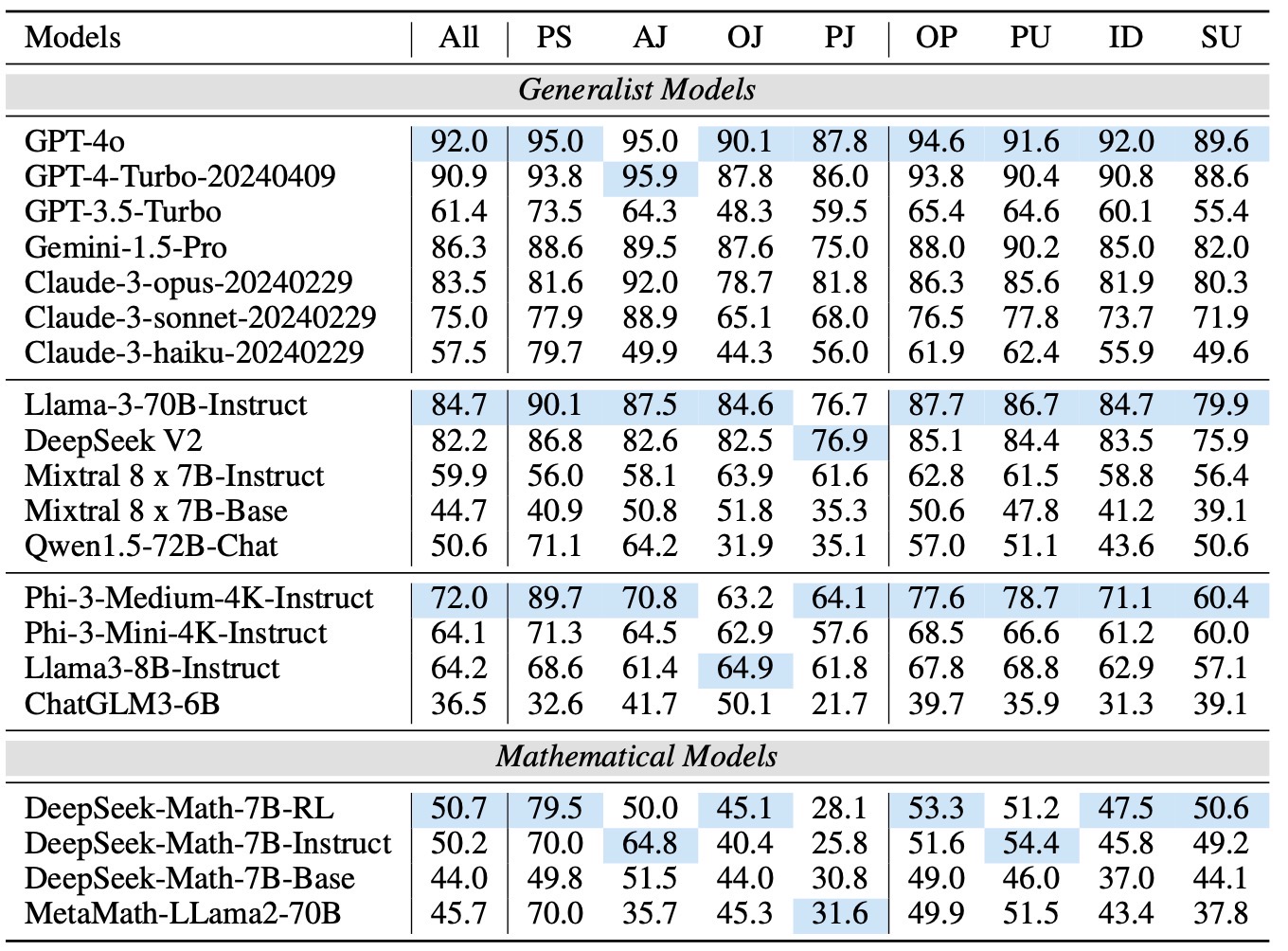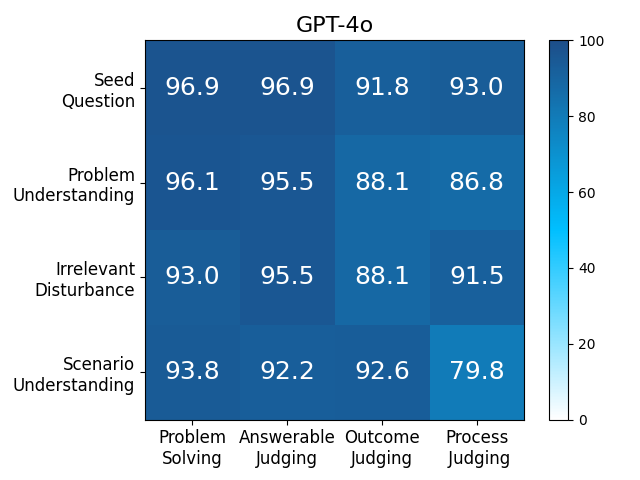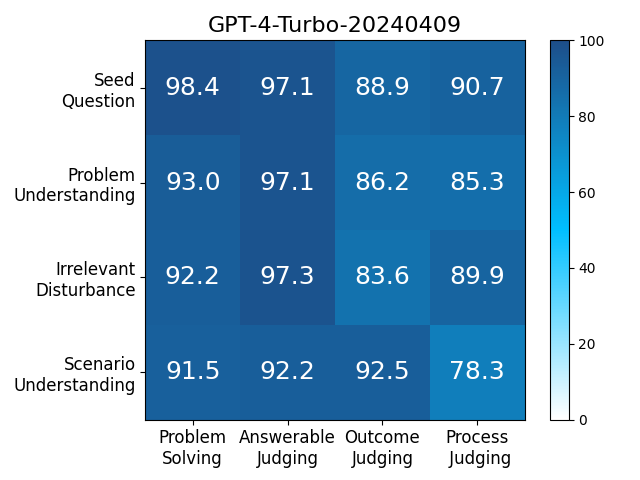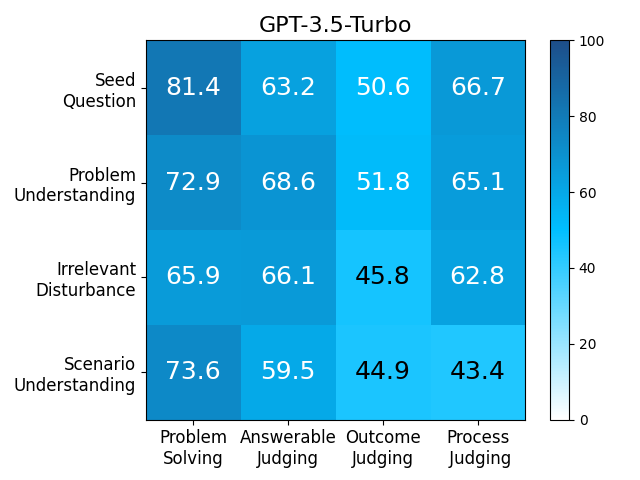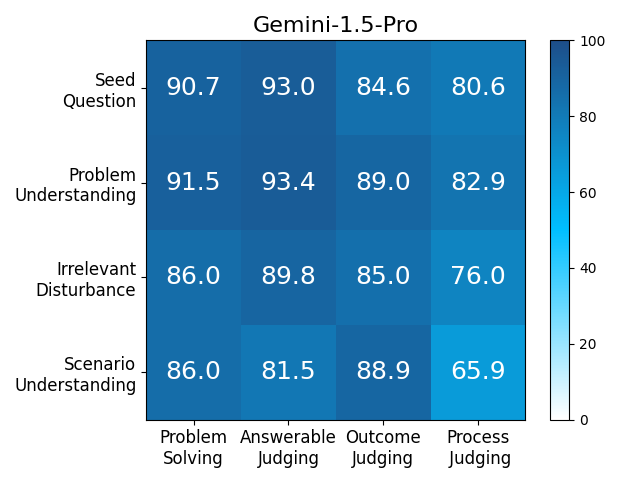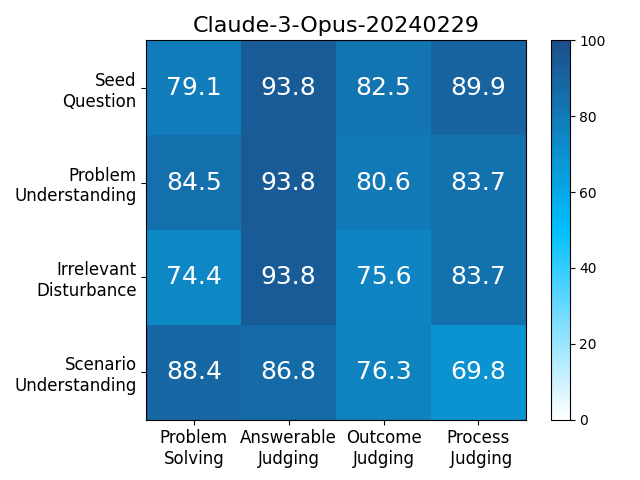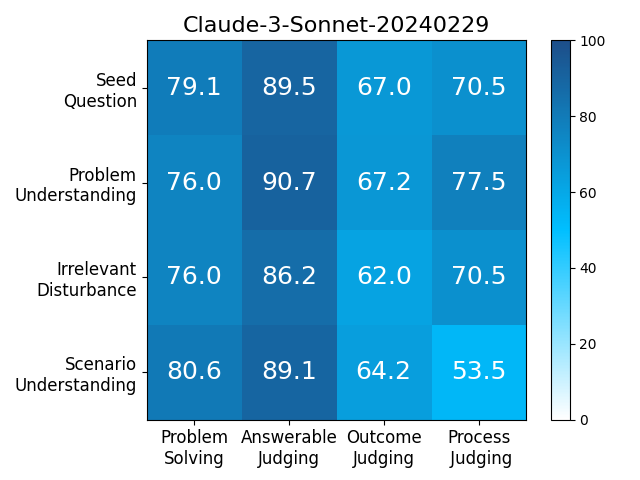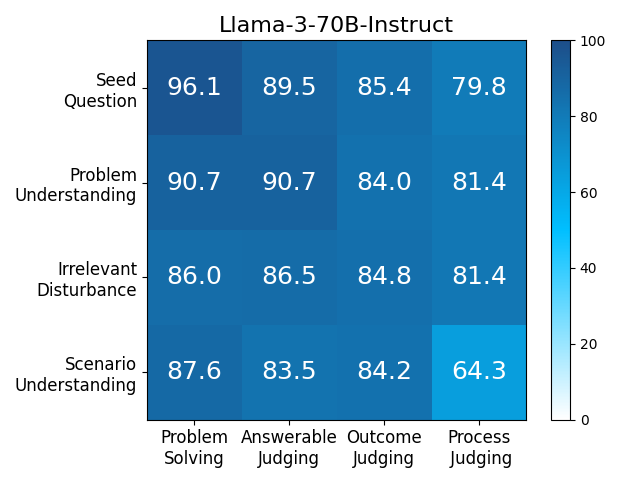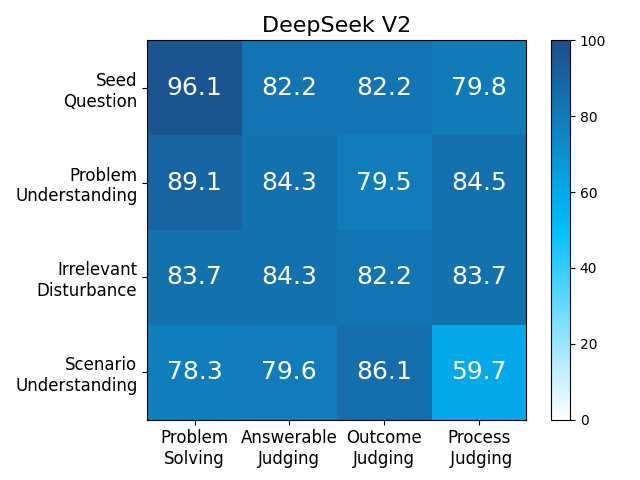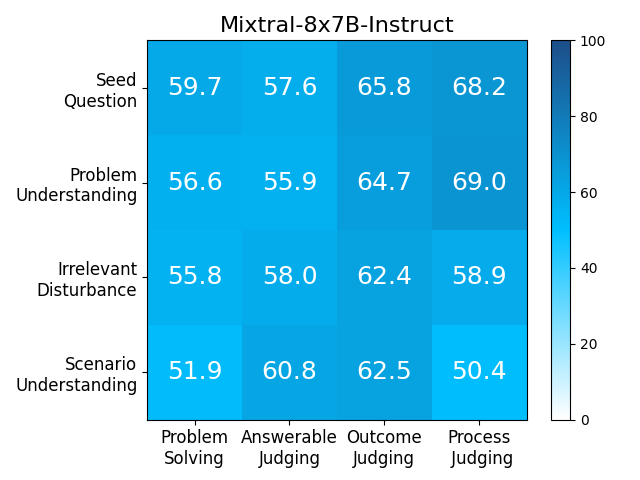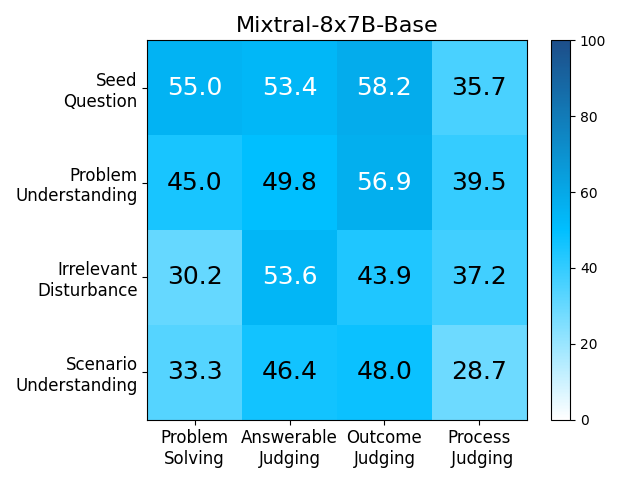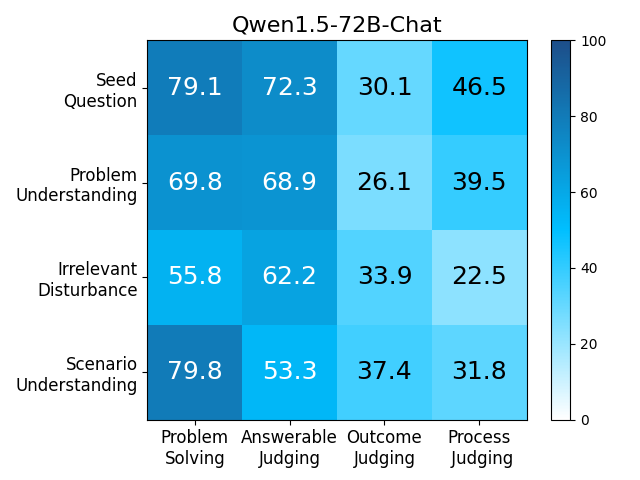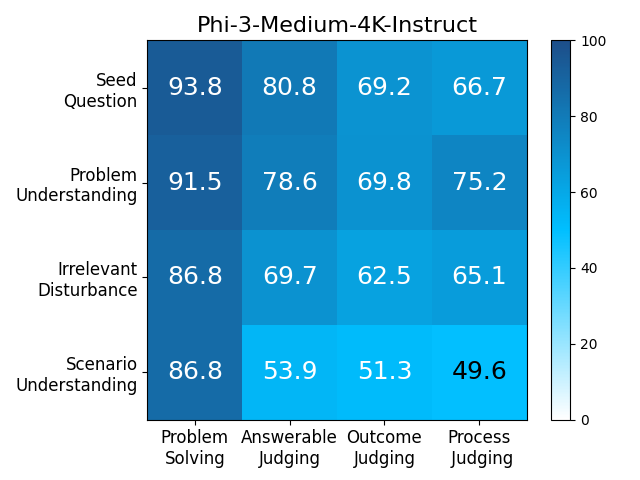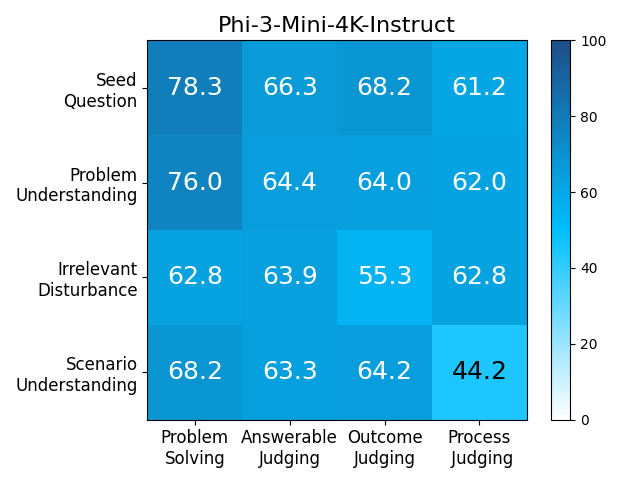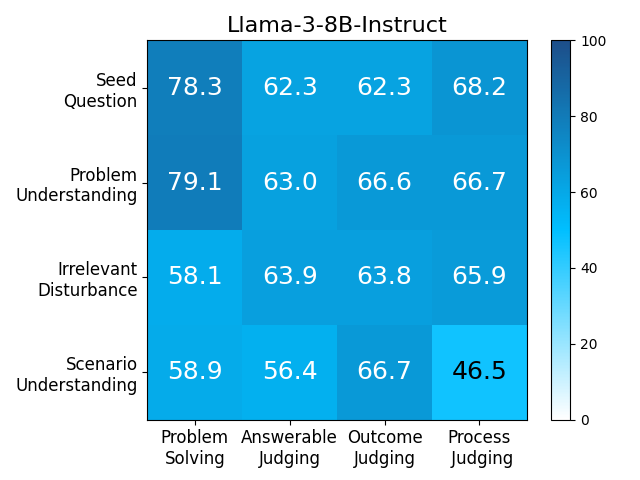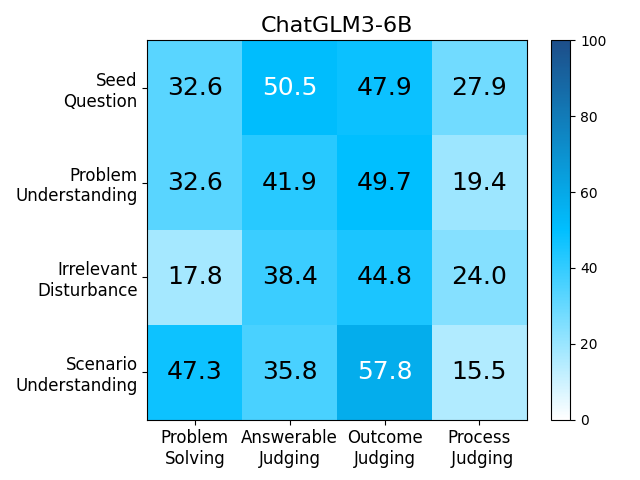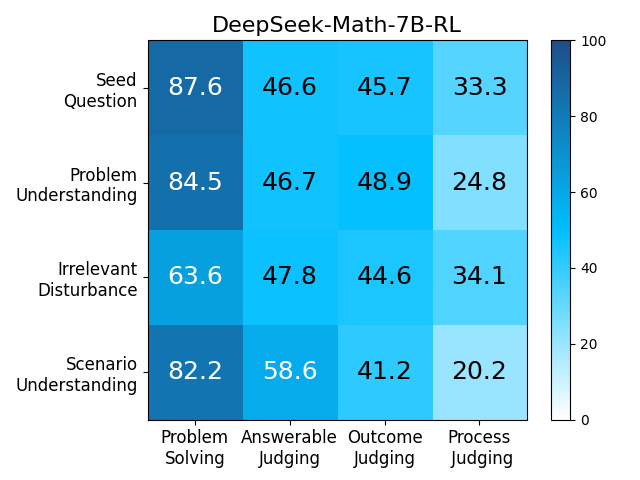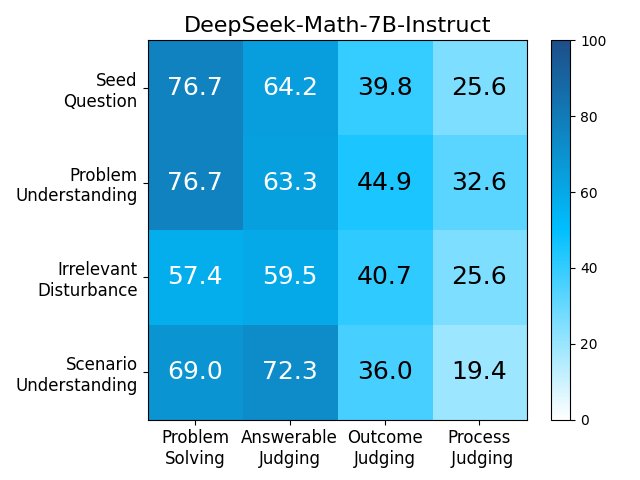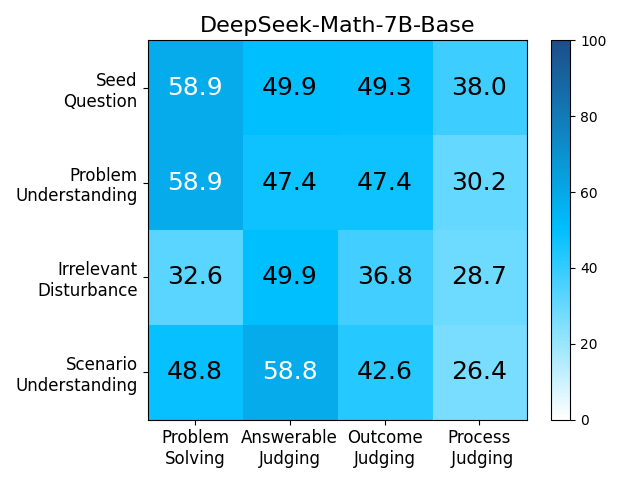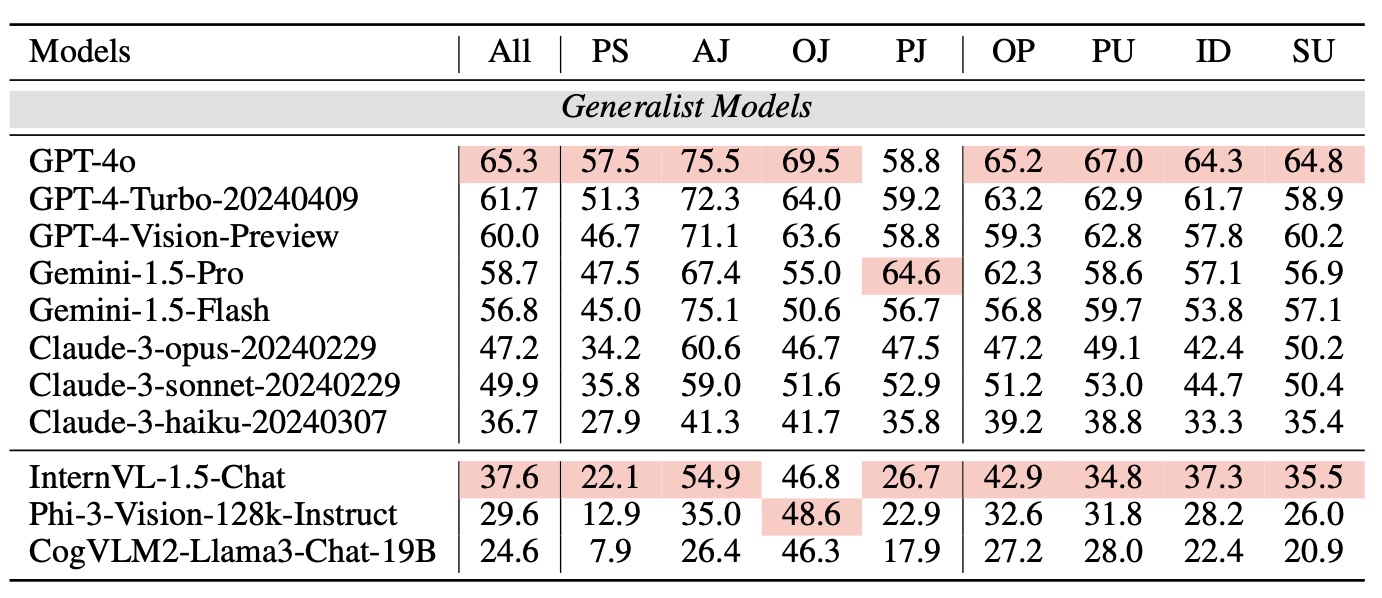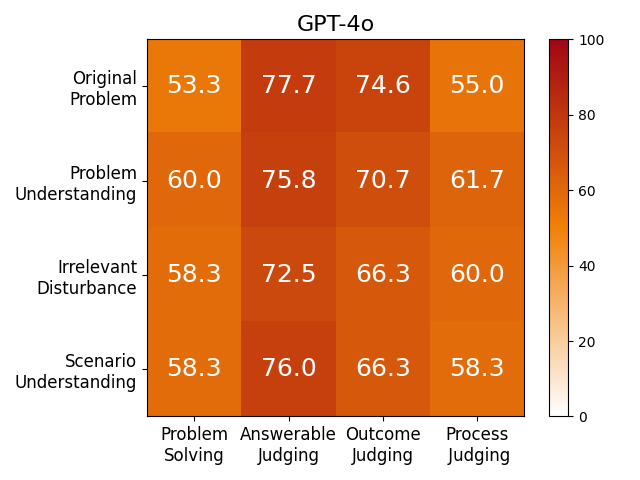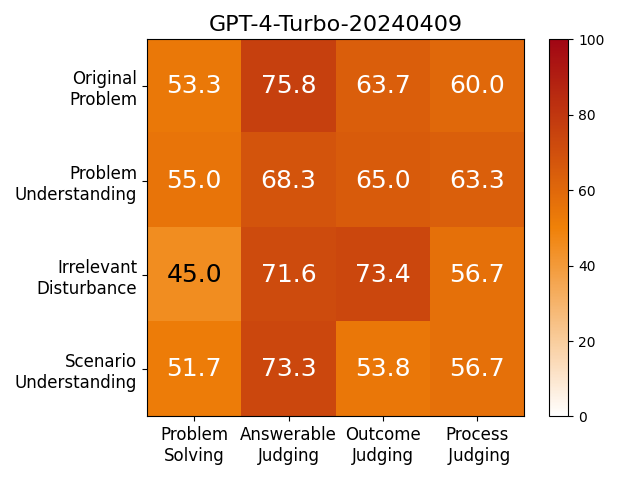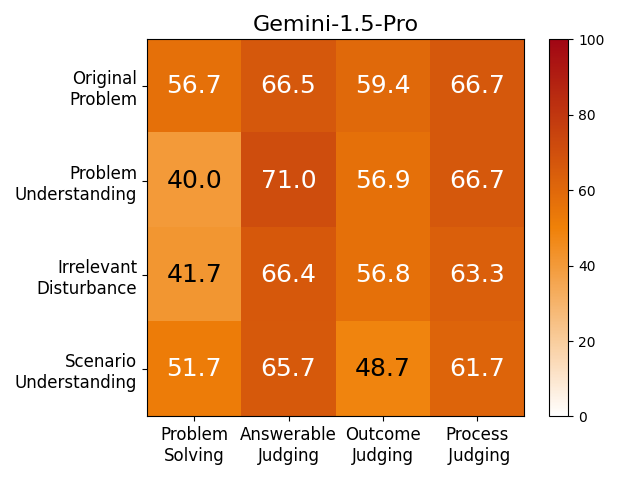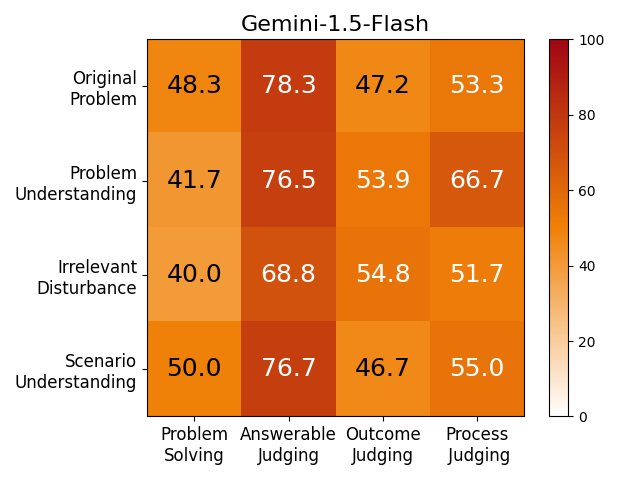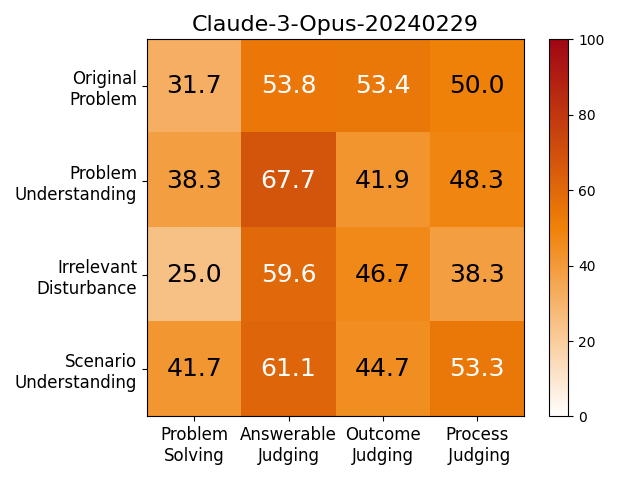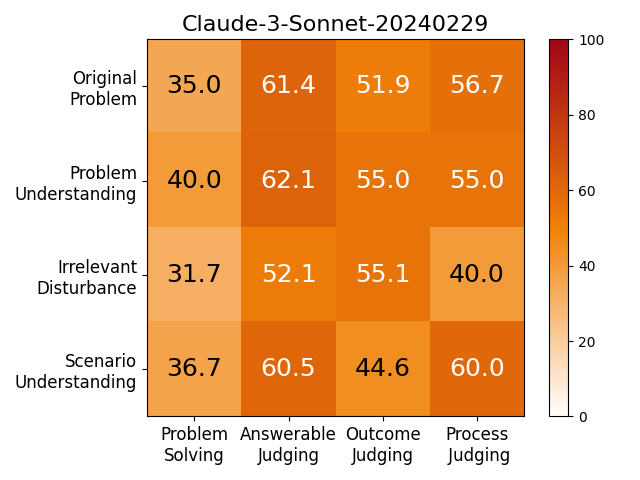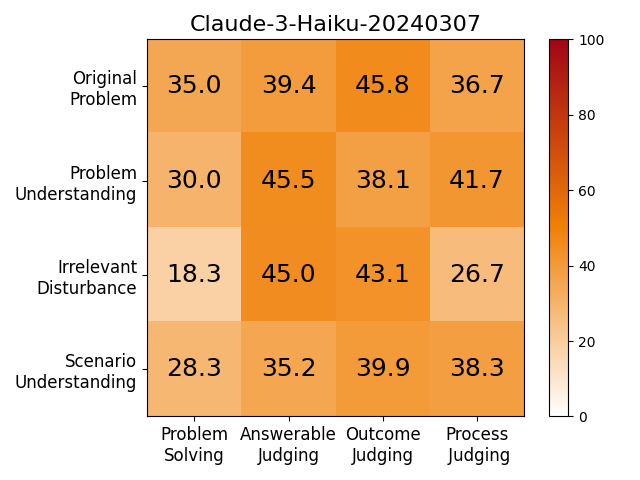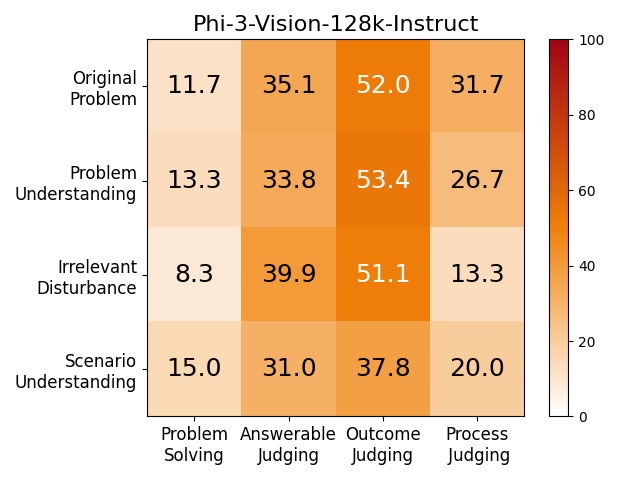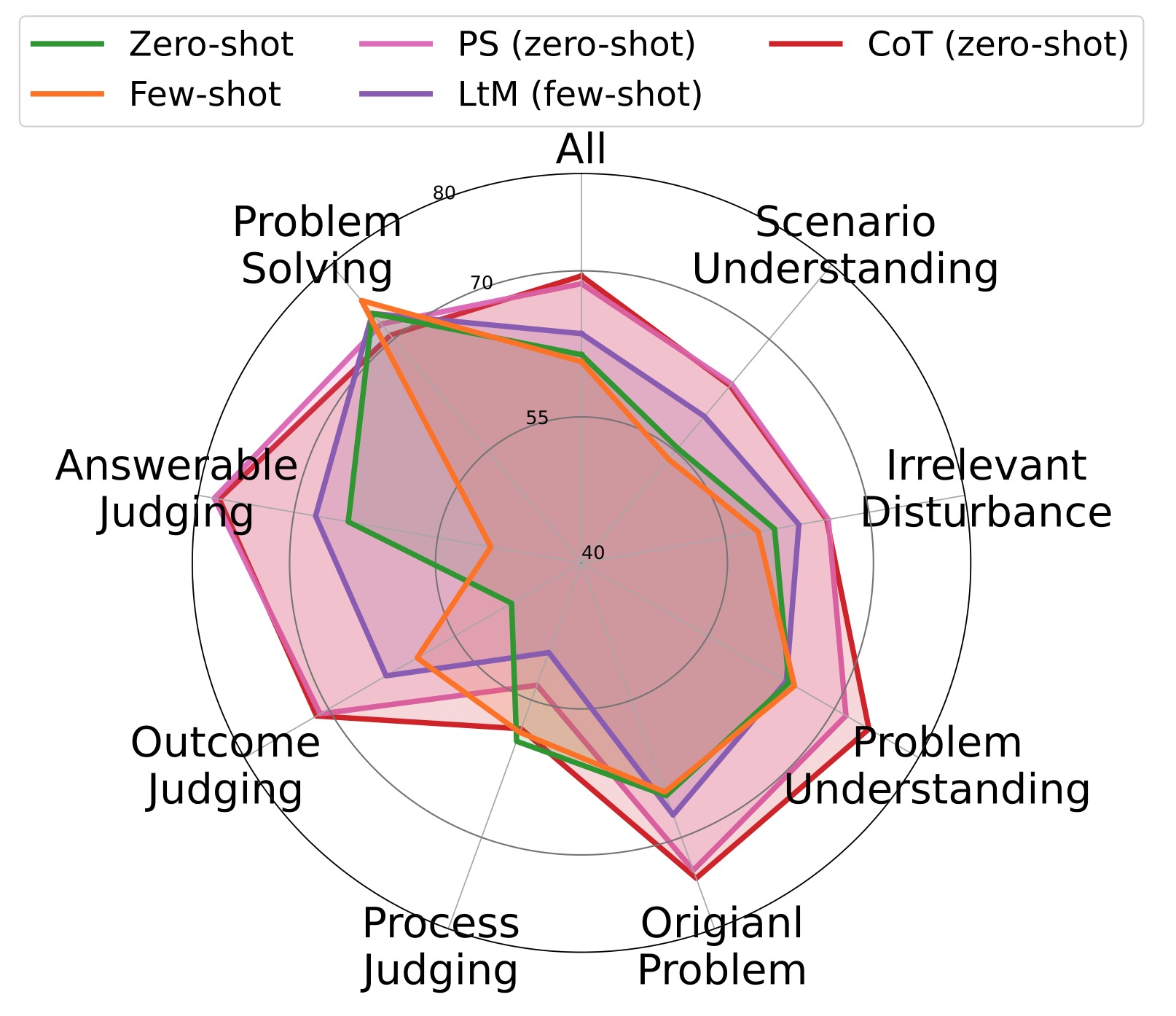Exceptional mathematical reasoning ability is one of the key features that demonstrate the power of large language models (LLMs). How to comprehensively define and evaluate the mathematical abilities of LLMs, and even reflect the user experience in real-world scenarios, has emerged as a critical issue. Current benchmarks predominantly concentrate on problem-solving capabilities, which presents a substantial risk of model overfitting and fails to accurately represent genuine mathematical reasoning abilities. In this paper, we argue that if a model really understands a problem, it should be robustly and readily applied across a diverse array of tasks.
Motivated by this, we introduce ![]() MATHCHECK, a well-designed checklist for testing task generalization and reasoning robustness, as well as an automatic tool to generate checklists efficiently. MATHCHECK includes multiple mathematical reasoning tasks and robustness test types to facilitate a comprehensive evaluation of both mathematical reasoning ability and behavior testing. Utilizing MATHCHECK, we develop MATHCHECK-GSM and MATHCHECK-GEO to assess mathematical textual reasoning and multi-modal reasoning capabilities, respectively, serving as upgraded versions of benchmarks including GSM8k, GeoQA, UniGeo, and Geometry3K.
MATHCHECK, a well-designed checklist for testing task generalization and reasoning robustness, as well as an automatic tool to generate checklists efficiently. MATHCHECK includes multiple mathematical reasoning tasks and robustness test types to facilitate a comprehensive evaluation of both mathematical reasoning ability and behavior testing. Utilizing MATHCHECK, we develop MATHCHECK-GSM and MATHCHECK-GEO to assess mathematical textual reasoning and multi-modal reasoning capabilities, respectively, serving as upgraded versions of benchmarks including GSM8k, GeoQA, UniGeo, and Geometry3K.
We adopt MATHCHECK-GSM and MATHCHECK-GEO to evaluate over 20 LLMs and 11 MLLMs, assessing their comprehensive mathematical reasoning abilities. Our results demonstrate that while frontier LLMs like GPT-4o continue to excel in various abilities on the checklist, many other model families exhibit a significant decline. Further experiments indicate that, compared to traditional math benchmarks, MATHCHECK better reflects true mathematical abilities and represents mathematical intelligence more linearly, thereby supporting our design. On our MATHCHECK, we can easily conduct detailed behavior analysis to deeply investigate models.

